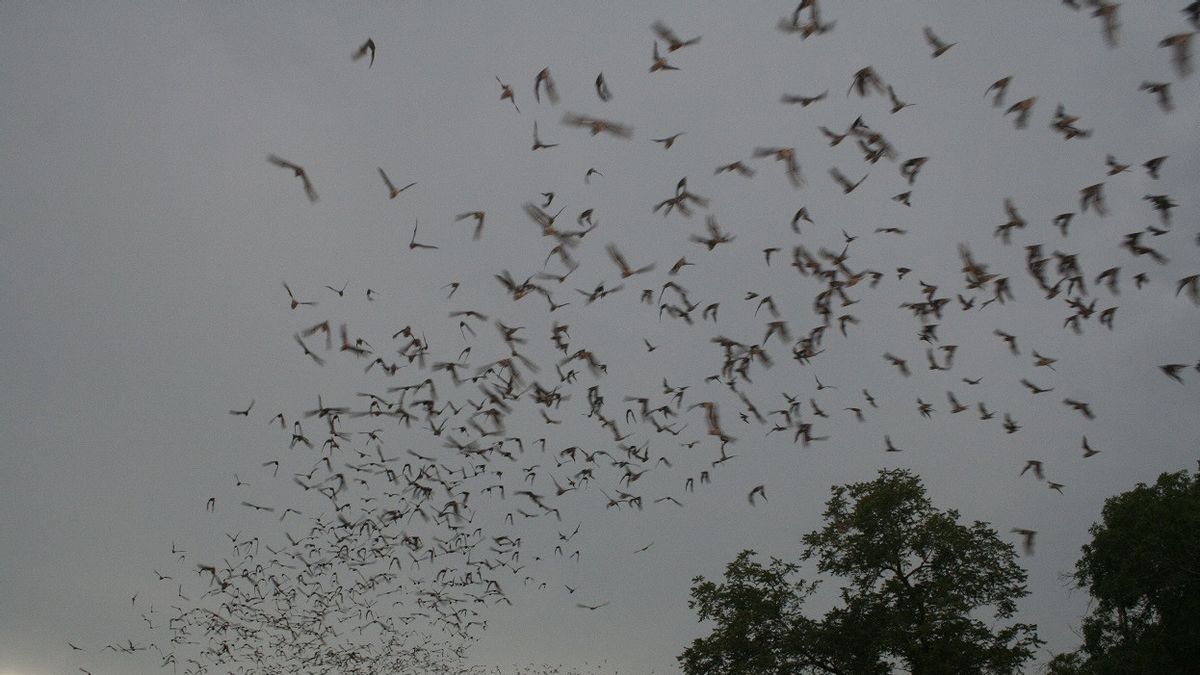JAKARTA - The bat trembled in fear as it hung on Maya Weinberg's gloved hand. "His name is Zorro and he's less than a year old," said Weinberg, a veterinarian and PhD candidate in Prof. Bat Lab. Yossi Yovel, as quoted by the Jerusalem Post, July 11.
Located in the I. Meier Segals Garden for Zoological Research, Tel Aviv University, Israel, the Bat Lab houses a wide range of Israeli biologists who specialize in innovative research.
As the biologists, cameramen, and the others flocked to get a better look, Zorro's shaking intensified. Weinberg carefully placed him back in the dark cage, keeping him comfortable and away from prying eyes and laboratory fluorescent lights.
In the Bat Lab, the real-life 'Bat Man' (and 'Bat Woman') conduct research on a wide variety of bats, the only mammals capable of flight.
There are more than 1,400 species of bats worldwide, most of which are nocturnal and have little contact with humans. Some are beneficial to their environment, as they feed on many insects and even help disperse seeds and pollinate flowers.

Since the COVID-19 pandemic, the public image of this unique winged creature has taken a major hit. So far, scientists haven't been able to find any evidence linking bats to the virus, but the connection has proven nearly impossible to dispel.
"Until now there is no evidence to suggest a link between bats and COVID-19. This idea borders on conspiracy. The way the scientific community echoes this theory is simply outrageous," Weinberg told The Media Line.
"It has caused great damage to bats around the world, especially in China, where it has damaged the public perception of bats, which was bad from the start," he criticized.
A recent study led by Weinberg and Tel Aviv University postdoctoral researcher, Dr. Kelsey Moreno, could have far-reaching implications for discovering the origins of COVID-19.
The study, recently published in the 'Annals of the New York Academy of Science', found that sick bats maintain social distancing, possibly to prevent the spread of mass contagion in their colonies.
To observe their behavior, the researchers monitored two colonies of Egyptian fruit bats. One lives in captivity in a cage and the other lives in its natural environment. The researchers injected a bacteria-like protein into several bats in each colony, which simulated an immune response that produces disease symptoms.
"We were very surprised to see sick bats actively maintaining social distance. We thought it was the group that would stay away from sick bats. However, sick bats were actively distancing themselves from others in the colony. This is really not typical animal behavior wild, who usually try to hide the disease," he explained.

Although the origins of the COVID-19 virus remain a mystery, some have speculated that a scientist in China studying the coronavirus in Wuhan may have leaked the strain of the virus, causing a worldwide outbreak.
The Wuhan Institute of Virology is located near the earliest known epicenter of the outbreak, but Beijing vehemently refutes this theory. However, Weinberg believes it is possible, a scientist who ventured deep into China's wilds to collect samples of the virus might unwittingly release it.
"As long as we keep our distance from bats and allow them to remain in their remote natural habitat, then we will not expose ourselves to pathogens for which we have no defenses," he stressed.
Other biologists at the Bat Lab are examining bat biomechanics, including the use of echolocation and sonar beams.
Meanwhile, doctoral candidate Ofri Eitan and his team are conducting behavioral experiments with bats in an anechoic chamber, a room designed to absorb reflected sound.
"In this flight space, we use two methods that can help understand the sensory behavior of bats. These two techniques are motion tracking and bat echolocation recording," explains Eitan.
This room is equipped with 50 ultrasonic microphones and a system that tracks the movement of the bat as it flies. The aim is to observe the sensory behavior of animals and gain a deeper understanding of how bats perceive their environment.

Eitan echoed Weinberg and emphasized that bats are not linked to the pandemic.
"We're trying to educate people and show them that bats are far more extraordinary creatures than they think."
Meanwhile, Adi Rachum, who is studying for his master's degree, is in charge of a printed colony in the Bat Lab, where dozens of fruit bats come and go at will. Rachum and the other students regularly feed the bats fresh fruit, giving them an incentive to keep coming back.
The room was dark, damp and like a cave. The goal is to mimic the natural environment of animals as closely as possible, while also allowing scientists to conduct research.
There are several cameras scattered throughout the cave, including a live feed that can be accessed online 24 hours a day, seven days a week.
"I chipped every bat we released. It didn't hurt them and helped us to identify them definitively, which in turn helped our research," said Rachum.
Weinberg, a veterinarian who has specialized in bats for the past 12 years, hopes the pioneering lab research that is ongoing will eventually help convince people that winged creatures are nothing to fear.
"They are very gentle, sociable and communicative animals. I worked with many different animals before arriving at bats. When you see how unique they are and learn the facts, you see them differently."
The English, Chinese, Japanese, Arabic, and French versions are automatically generated by the AI. So there may still be inaccuracies in translating, please always see Indonesian as our main language. (system supported by DigitalSiber.id)













